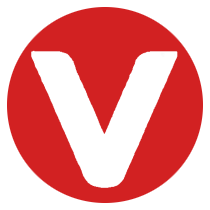As artificial intelligence dominates headlines, success in industrial automation requires a broader, more holistic approach. From managing distributed, heterogeneous edge environments to closing talent gaps and meeting security demands, the key to transformation lies beyond AI alone.
Wind River experts offer a clear path forward — one that unlocks innovation at the industrial edge.
1. Securing the Distributed Edge #
As computing shifts closer to the source of data — on factory floors, oil rigs, or wind turbines — new security risks emerge. Traditional IT security practices, designed for centralized, high-bandwidth environments, fall short in edge deployments that are offline, distributed, physically exposed, and sometimes unattended.
To address this, many organizations are adopting defense-in-depth strategies:
- Zero Trust architectures: Enforce strict security using secure boot, TPMs, and root-of-trust hardware. Every connection is untrusted by default and subject to least-privilege access.
- Immutable infrastructure with signed updates: Prevent configuration drift and tampering by deploying non-modifiable base images.
- End-to-end encryption: Protect sensitive data with TLS for data in transit and LUKS for data at rest.
- Identity and access management (IAM): Robust controls ensure only authorized users and systems can interact with edge assets.
2. Scaling Risk & Compliance Management #
In large-scale industrial systems, managing thousands of edge devices brings complexity. Devices often run different software versions, collect sensitive data, and operate under varying regulations — making security consistency and auditability a challenge.
To simplify compliance at scale, organizations are implementing:
- Infrastructure as Code (IaC) and GitOps: Automate configuration and policy enforcement across environments.
- Automated compliance monitoring and reporting: Detect and remediate drift in real time.
- Open frameworks and standards: Use initiatives like LF Edge and LF Energy to ensure interoperability and avoid vendor lock-in.
By embedding security and compliance into the platform layer, enterprises can drive innovation while minimizing risk.
3. Applying AI & ML Effectively #
AI is undeniably powerful. In industrial use cases, it’s driving predictive maintenance, real-time quality control, and energy optimization.
But delivering AI value at the edge is hard. Challenges include fragmented, low-quality data, limited compute capacity, and inconsistent environments. Deploying large models at the edge means balancing latency, energy use, and cost — all of which can impact ROI.
To succeed, organizations must focus on:
- Data access and governance: Define clear policies and integrate OT systems (SCADA, PLCs) with IT platforms.
- Efficient AI methods: Use techniques like semi-supervised learning, synthetic data, and transfer learning — and know when to apply them.
- Secure, updatable models: Ensure models can be audited, validated, and patched quickly.
- Continuous improvement: Retrain models centrally to improve accuracy over time.
- Optimized edge inference: Deploy lightweight, accelerated models (e.g., GPU-powered) at the edge, while offloading heavy training to centralized data centers.
As AI scales from pilot projects to production, organizations must focus on tangible results and clear business cases to prove ROI.
4. Bridging the Talent Gap #
Technology doesn’t create value — people do.
As IT and OT converge, employees must develop cross-domain skills and embrace technologies like AI, cloud, and automation.
To drive adoption and value, organizations must:
- Invest in training for IT and OT teams
- Embed change management practices to overcome resistance and support new workflows
- Redefine roles — shifting from “control participants” to “supervisory orchestrators” who oversee autonomous systems with human judgment
Without a strong human strategy, even the best technology will stall.
5. Enter eLxr®: Enabling Industrial Innovation at the Edge #
We’re at a pivotal moment in industrial edge transformation. With the right tools, organizations can embrace cloud-native orchestration, security-by-design, and human-centric operations — all while managing massive complexity.
Wind River enables this future through the eLxr® portfolio.
-
eLxr® Pro, a commercial-grade Debian® Linux, connects and manages heterogeneous edge workloads with flexibility and scale. Partnering with companies like Avassa, it supports orchestration of both containers and VMs across diverse edge environments.
-
In collaboration with Zededa and NVIDIA, eLxr® Pro also addresses real-world AI challenges — from model development and deployment to secure, zero-touch management across rugged edge locations.
Security is core to Wind River’s DNA. With eLxr® Pro, enterprises can deploy hardened, minimal OS builds, enable over-the-air (OTA) updates, and monitor compliance with global standards — including NIST, GDPR, and the upcoming EU Cyber Resilience Act.
Beyond the platform, Wind River delivers professional services to bridge the human gap — from consulting hours to training and security workshops that boost technical proficiency.
The Future Is Intelligent, Secure, and Human-Centered #
As the industrial automation market continues to expand, the winners will be organizations that align technology, processes, and people.
With solutions like eLxr® Pro, industrial leaders aren’t just modernizing operations — they’re building resilient, intelligent ecosystems centered on long-term innovation and human impact.
About Wind River #
Wind River is a global leader in intelligent edge software. For over four decades, it has supported mission-critical systems that demand the highest levels of security, safety, and reliability. From aerospace and automotive to industrial, medical, and telecom sectors, Wind River accelerates digital transformation through a robust product portfolio, world-class support, and a trusted partner network.
